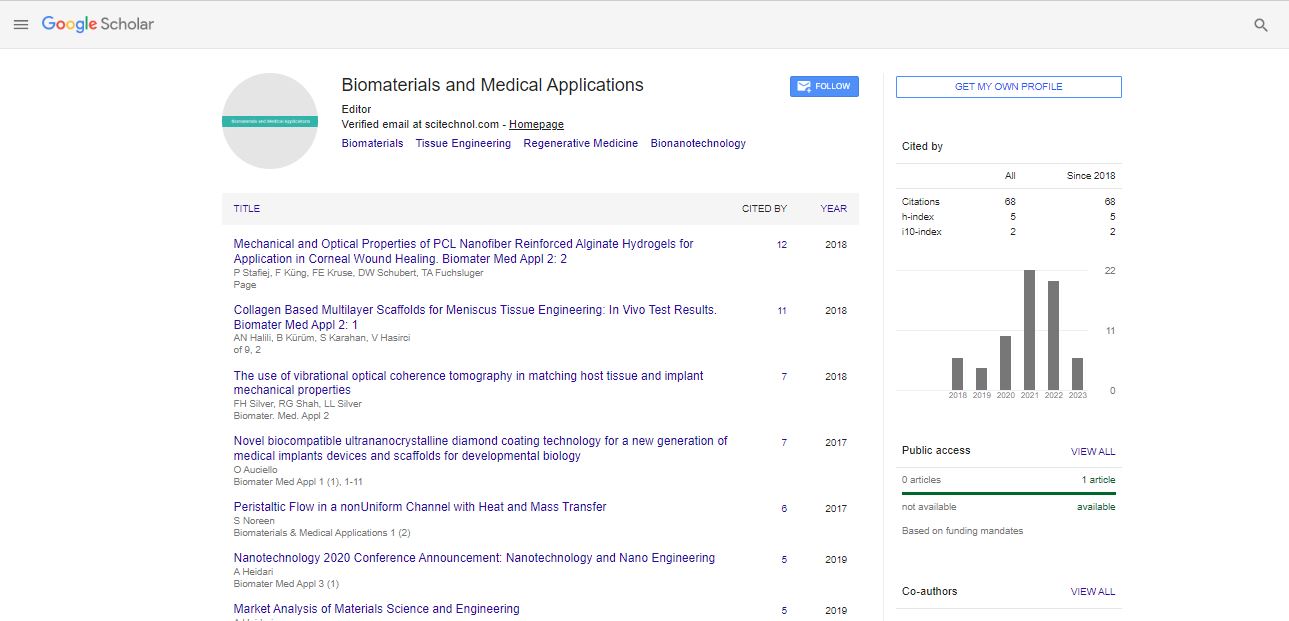PLA and PETG applied to extrusion-based 3D printed snap-fit connections for product assembly
Leonardo Santana, Alves J L, Sabino Netto AC
University of Porto (FEUP), Portugal
Federal Institute of Santa Catarina (IFSC), Brazil
: Biomater Med Appl
Abstract
The goal of this work is to investigate the capabilities of low-cost extrusion-based 3D printing on building snap-fit connections to develop products for assembly. At first, we have conducted studies to recognize user-printing system relations, and to identify challenges when building parts with such connections and the influence factors in the quality of the printed components. The following step was planning the snap fit printing by selecting building materials, and analyzing de friction between surfaces, and the assembly force behavior after successive insertion/removal cycles. We have studied two polymers: Poly acid lactic (PLA) and Polyethyletherphthalate Glycol (PETG). Preliminary results show that the PETG elements, due to its flexibility, present better answers to cyclic loads, with long stages of assembly force stabilization, while the PLA parts, due to the greater stiffness and low deformation capacity of the material, present permanent damage in its structure. In product development, PETG offers advantages for applications where assembly and disassembly are required, and PLA, which has a higher mechanical strength, can be used in single assembly designs.
Biography
Leonardo santana is attending University of Porto (UP)’s School of Mechanical engineering doctorate program with CNPq scholarship. He has completed masters from the Federal University of Santa Catarina (UFSC)’s School of mechanical engineering graduation program. He has six years of experience in open source 3D printing research.
E-mail: leonardosantana29@gmail.com
 Spanish
Spanish  Chinese
Chinese  Russian
Russian  German
German  French
French  Japanese
Japanese  Portuguese
Portuguese  Hindi
Hindi 